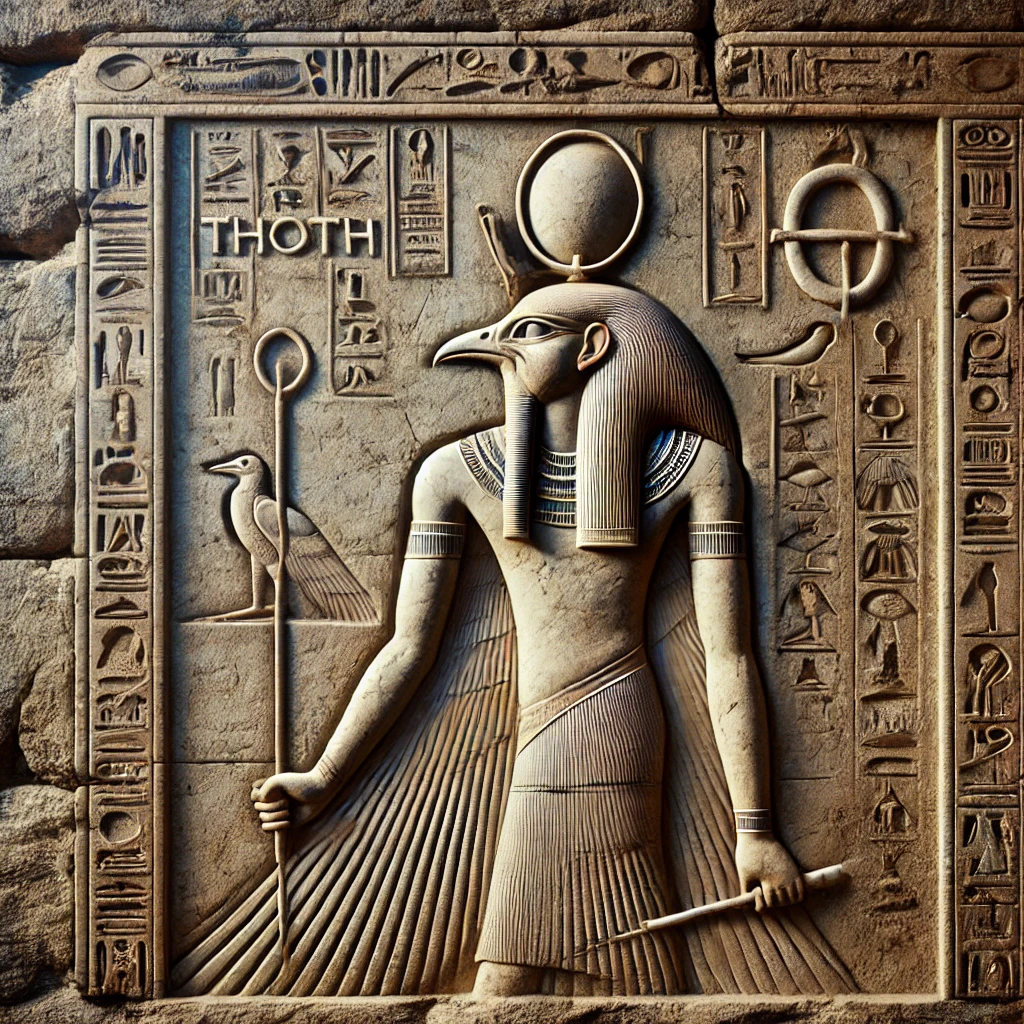The God of Wisdom: Depiction of Thoth in Ancient Egyptian Relief Art

The image showcases a remarkable ancient Egyptian relief depicting Thoth, the god of wisdom, writing, and knowledge, with the head of an ibis. This powerful and intricate carving is part of a larger Egyptian mural that brings to life one of the most significant deities in Egyptian mythology. The use of hieroglyphs surrounding the figure enhances the religious and cultural context, serving not just as decoration but as a means of communication with the gods and reinforcing the divine role of the figure represented. Thoth was often invoked as a mediator between gods and humans, and his image played a vital role in the spiritual and intellectual life of ancient Egypt.

Thoth’s representation as a human figure with the head of an ibis was deeply symbolic. The ibis, with its long, curved beak, was associated with the idea of the written word, as it was often seen pecking at the earth, symbolizing the engraving of knowledge into the fabric of society. This god was believed to have invented writing and played an essential role in recording the deeds of both the gods and the kings of Egypt. His role as the scribe of the gods gave him the authority to inscribe the fate of all beings, including human souls, in the afterlife.
The relief in the image also shows Thoth holding a scepter and an ankh, two symbols of power and life. The scepter represents authority, while the ankh, often referred to as the key of life, symbolizes eternal existence. Together, these symbols reinforce Thoth’s dual role as both the keeper of knowledge and a protector of life and order. The intricate carving of his form and the careful detailing of the hieroglyphs on the stone reveal the advanced artistic skills of ancient Egyptian craftsmen who used these artworks to preserve and communicate the knowledge of their civilization.
The presence of hieroglyphs surrounding Thoth’s image adds to the spiritual significance of the artwork. Hieroglyphs, the writing system of ancient Egypt, were more than just letters or words; they were an art form used to convey religious truths, cosmic laws, and the power of the gods. The inscription likely tells a story or provides a prayer, offering reverence to Thoth and appealing for his guidance and wisdom. For the ancient Egyptians, these reliefs and inscriptions were not merely decorative but were vital components of temples and tombs, connecting the earthly realm to the divine.

The careful preservation of these reliefs allows us a glimpse into the beliefs and practices of the ancient Egyptians. Thoth’s image is not just a representation of a god but also a symbol of the intellectual and spiritual pursuits that defined ancient Egyptian society. The legacy of Thoth, and of Egypt itself, is preserved in these artworks, providing a lasting testament to the importance of wisdom, writing, and divine knowledge.
Today, these carvings continue to inspire awe and respect, reminding us of the immense intellectual and artistic achievements of ancient Egypt. As visitors stand before these ancient reliefs, they are transported to a time when the gods were not just believed in but actively worshiped and revered through the art that decorated temples and tombs. The relief of Thoth is not merely an image on a wall; it is a link to a civilization that prized knowledge, spirituality, and the divine order of the world.